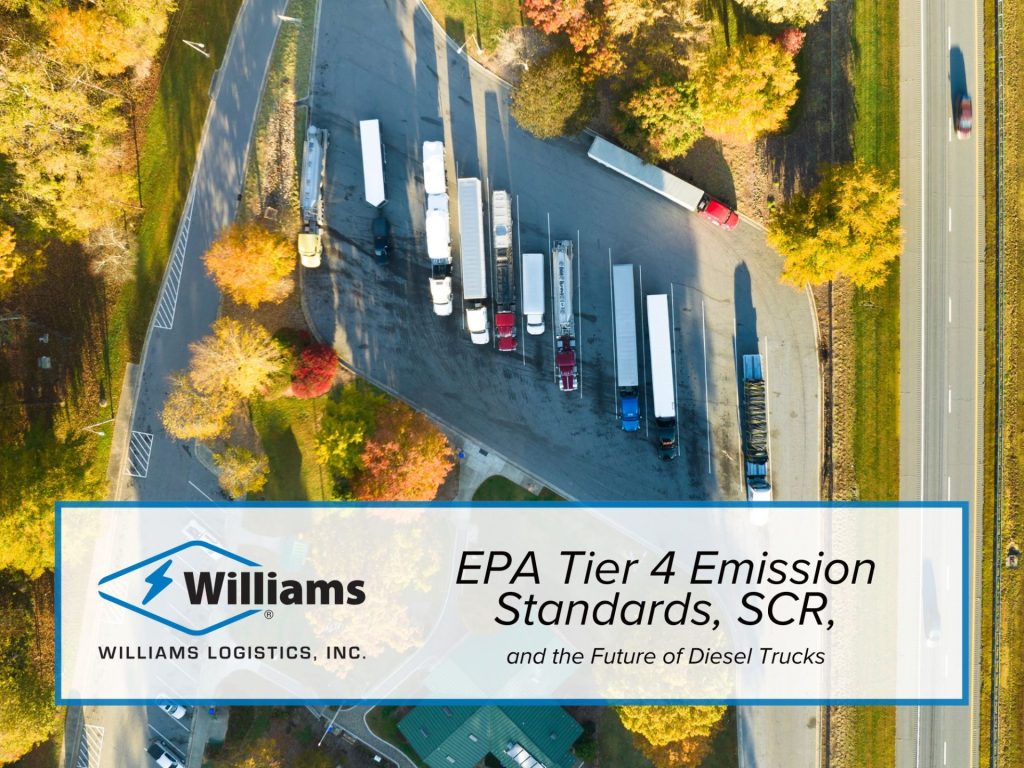Leading into 2027, the U.S. Environmental Protection Agency (EPA) is updating its guidance to keep diesel trucks on the road and improve air quality—while ensuring that fleets like Williams Logistics can meet compliance without losing operational reliability. The intersection of stricter Tier 4 emission standards and innovations in selective catalytic reduction (SCR) technology is reshaping how diesel power remains viable in the transport industry.
EPA’s Mission: Reliable and Cleaner Diesel Trucks
Starting in model year 2027, the EPA’s latest rules will require all new diesel trucks to be engineered with failsafes that prevent sudden power losses or “derates” due to depleted Diesel Exhaust Fluid (DEF). In the past, running out of DEF could trigger abrupt shutdowns, stranding vehicles and causing dangerous situations. The new guidelines now mandate a 650-mile low-DEF warning, followed by a gradual ‘derate’ to 25mph spread over 8,400 miles or 160 operating hours, rather than complete power loss. This helps ensure continued operation and safety, even as vehicles maintain compliance with strict emissions requirements.
EPA’s commitment is not just to emissions reductions but to practical reliability that supports trucking businesses and fleet continuity.
Understanding EPA Tier 4 Emissions Standards for Diesel Trucks
Tier 4 standards represent the most stringent set of EPA emissions requirements for off-highway and on-highway diesel engines to date. Their primary goal is to reduce particulate matter (PM, or black soot) and nitrogen oxides (NOx) emissions by up to 99% compared to pre-2008 levels. Key requirements include:
- Advanced fuel injection systems for cleaner combustion.
- Electronic injector control to optimize efficiency.
- Enhanced turbocharging for better performance with less pollution.
However, meeting Tier 4 “final” standards requires more than just smarter engines—it demands exhaust after-treatment technologies, with SCR taking center stage.
SCR Technology: The Secret to Clean Diesel Power
Selective Catalytic Reduction (SCR) is the cutting-edge solution that allows modern diesel engines to meet Tier 4 and even stricter emissions standards. SCR systems work by injecting DEF—a liquid urea compound—into the exhaust stream. The DEF mixes with hot exhaust gases and passes through a catalyst, causing a chemical reaction that converts harmful NOx emissions into harmless nitrogen, water, and carbon dioxide.
- Efficiency: About 1 gallon of DEF treats 20 gallons of diesel fuel.
- Result: Up to 90% reduction in NOx emissions from diesel trucks.
SCR systems are now standard in most new heavy-duty trucks. They help keep fleets compliant with EPA rules and also improve fuel economy, making diesel viable even against electric vehicle mandates.
What's Next
With tighter rules on the horizon and SCR/SCR+DPF tech officially becoming the norm, fleets need to:
- Ensure all new trucks are equipped with up-to-date SCR/DEF management systems.
- Train drivers on DEF refill procedures and warning signs for low fluid.
- Invest in maintenance routines to keep emission systems functioning optimally.
- Stay ahead of model year transitions—older “pre-SCR” trucks may not remain road-legal after 2027 without expensive retrofits.
Conclusion
EPA’s 2027 standards, robust SCR tech, and a practical approach to emissions and reliability mean that diesel trucks have a secure future—just cleaner and smarter than ever. Local companies can rely on continuing diesel operations, provided that fleets commit to maintaining Tier 4 compliance and embracing SCR/DEF systems as industry best practices. This is a win for clean air, industry safety, and everyday reliability on America’s highways.
